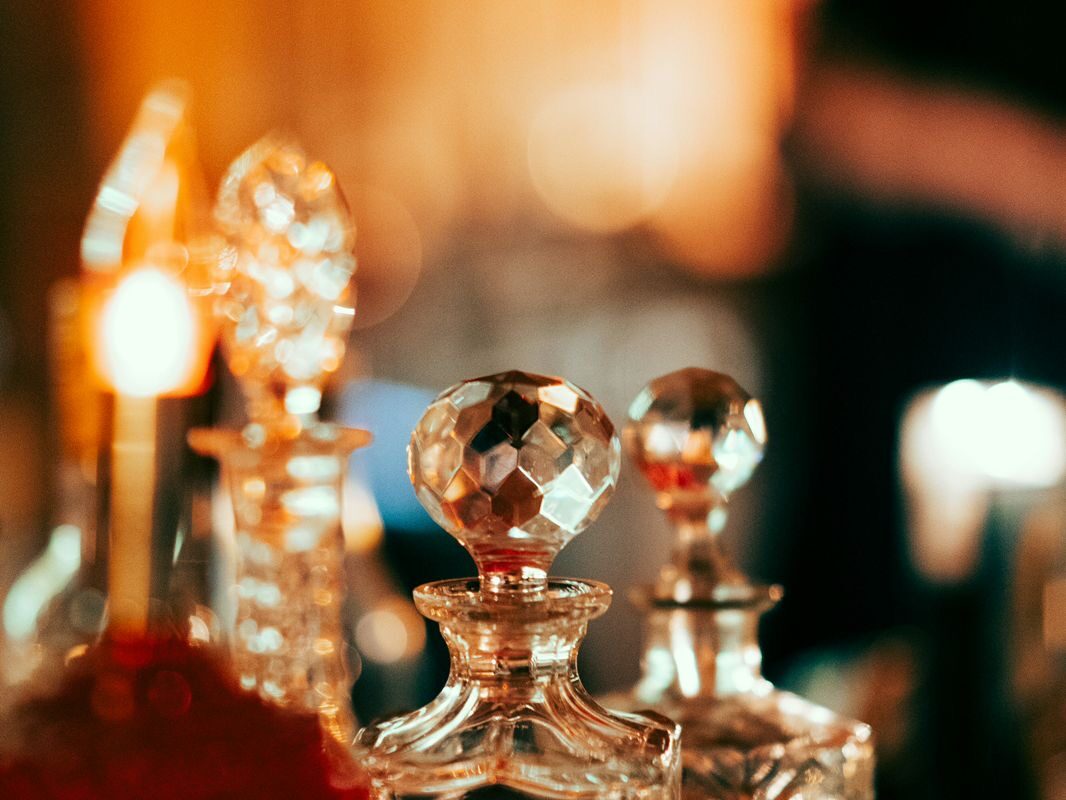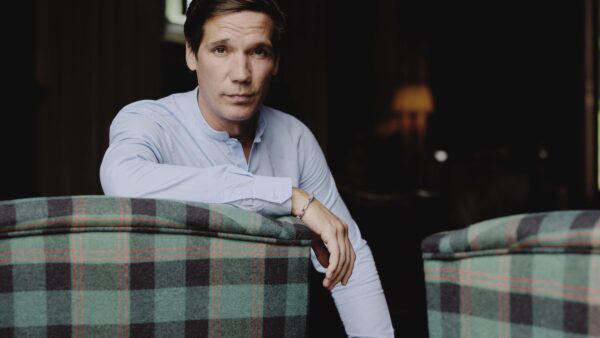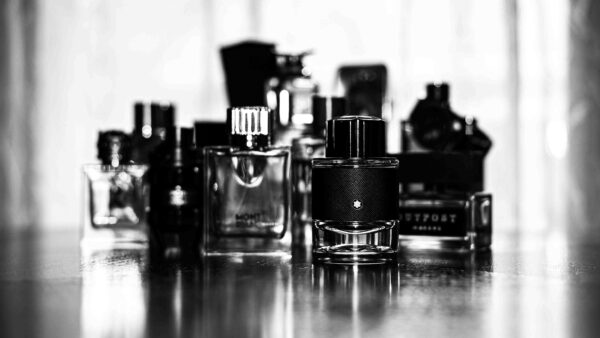Four years later, I still can’t stand the smell of bergamot.
During the first pandemic lockdown, I had to switch perfumes. Among the many terrifying uncertainties of day-to-day life were these small inconveniences, so much easier to comprehend. No carrots at the market, birthdays celebrated over Zoom, and the loss of my luxury fragrances, which were deemed non-essential. Desperate for a pick-me-up, I used the only perfume I could handle. It was far from the worst thing about lockdown, but it did make the list.
As a luxury perfume lover, I rarely step out of my comfort zone unless absolutely necessary. My modest collection consists of designer fragrances that I’ve often contemplated for months before buying. When I recently ventured to try a couple of mid-range brands, I wasn’t a fan, and I wasn’t alone. Doing a blind sniff test, my husband’s verdict was “urinal cake.”
Does my body chemistry prefer a higher price tag? Or is my reaction to perfume coloured by my knowledge of its cost?
“Luxury in fragrance goes beyond just the scent itself,” says Shehzaad Mulla, who manages luxury beauty brands and is a fine fragrance specialist. “It’s a multi-faceted experience combining fragrance, packaging, and brand communication.”
In a smell test with wine science students, a researcher tricked them with two glasses of white wine, one dyed red. The students described the smell of the “red” wine differently, assuming it was what it appeared to be. The same researcher found that experts scored wine differently depending on its bottle. Marketing wouldn’t be a trillion-dollar industry if people didn’t judge books by their covers.
So maybe I enjoy being the kind of person who wears expensive perfume — but that’s not the whole story. Unlike designer fashion, which is often indistinguishable in quality from clothes that are a fraction of the price, a good scent is hard to miss. And a cheap scent is unmistakable. Apart from the name on the bottle, certain fragrances just smell luxurious.
The Rarity Factor
“Expensive-smelling perfumes often feature rare and luxurious ingredients like oudh, iris, and sandalwood, which are both hard to source and highly valued in the fragrance industry,” explains Mulla. Aparna Gupta, founder of The Lavenderoom, agrees. “To me, the scent of luxury is a rose because not everyone can grow it. Either you have the time or a talented gardener,” she says.

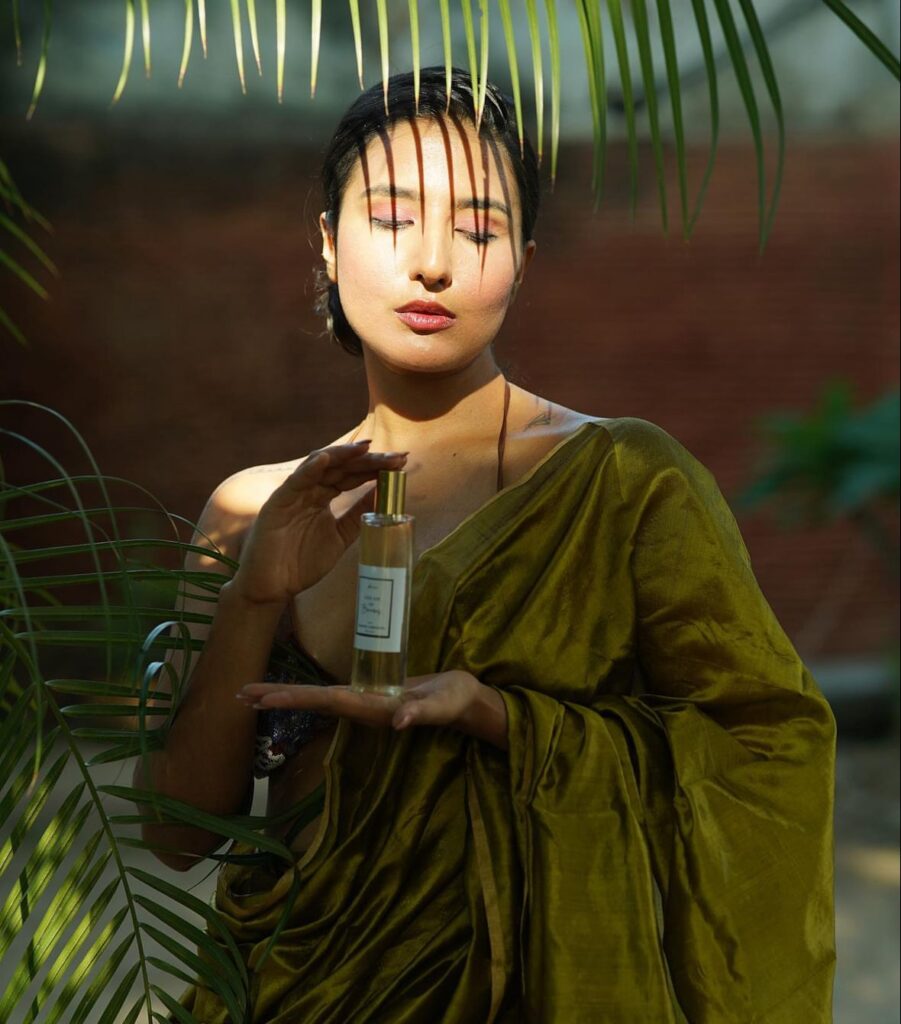
Esha Tiwari, founder of homegrown plant-based perfumery Kastoor, goes further. “Today, going back to your source is a luxury. Nature is a luxury. An expensive ingredient is something nature has pronounced as luxurious, and we mere mortals follow.”
Natural rarity has determined the price of a scent for millennia. Attars of oudh, frankincense, and Damask rose have been prized since Antiquity, and traditional extraction processes are labor-intensive. The skill, time, and raw materials required for these perfumes all rack up the cost of production.
Most of us use modern European-style perfumes, distilled in alcohol and blended in labs by master noses. “An expensive-smelling perfume has a well-balanced composition where no single note overpowers the others,” says Mulla. “This craftsmanship is often what distinguishes luxury fragrances from more affordable ones.” And yet, harmony and natural luxury isn’t always the goal of the master nose.
The Standout Factor
Think of the tire-rubber musk opening of Guerlain’s Shalimar — a classic oriental, but certainly not for everyone. Similarly, the aldehyde punch of Chanel No. 5 can be suffocating, yet devotees wear it every day (and even to bed, like Marilyn Monroe). Mugler’s Alien — a personal favorite — is a thick fug of synthetic jasmine and little else.

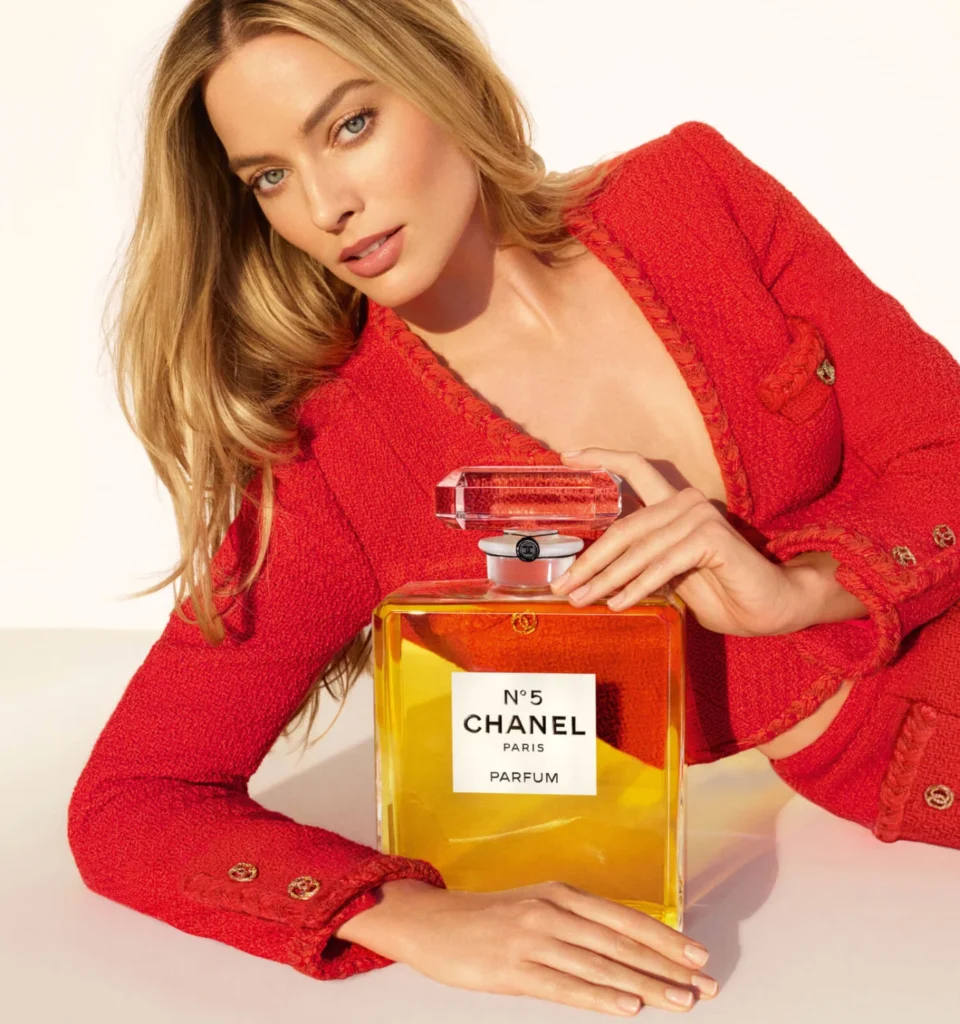
“Luxury brands often use ingredients which add to the exclusivity and richness,” says Mulla. “But these ingredients may not always cater to mainstream tastes. They may have bold, distinctive profiles — for instance, fragrances heavy on oudh, leather, or animalic notes may feel too intense for a wider audience.”
Clearly, these strong fragrances don’t smell expensive due to their seamless balance. Some of them aren’t even pleasant on the nose, yet they still exude luxury. Like haute couture isn’t always meant to be wearable or digestible, a lot of luxe fragrances are made to challenge ideas of good taste and good smell. The smoothest blend of notes isn’t the most interesting or exotic.
“Marc Jacobs Daisy is not inexpensive,” points out Gupta. “But is it rich? Does it scream opulence? Oud, musk, or saffron make your presence felt. It’s a boss mindset. You have to be willing to offend.”
Quiet Luxury and the Art of Layering
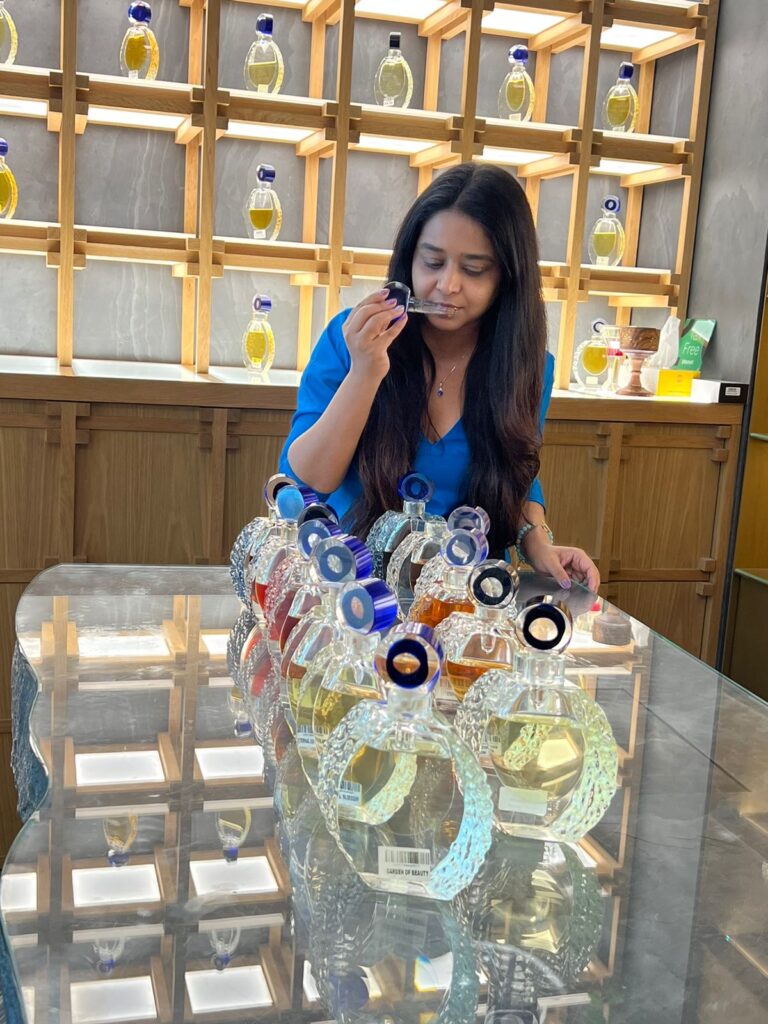
Crowd-pleasing fragrances are great when you want to be very demure and very mindful of others. The scents that make you smell and feel expensive are also likely to cause more strong reactions, whether it’s Chopard’s spicy Oud Malaki or a toothachingly sweet Prada Candy. As for quiet luxury in fragrance? Wealth can whisper. “Silk, white musk, wood… like wearing white mulmul or linen,” says Gupta. “It’s not the dollars but the sensory experience and the impression you create.” Soft scents can still have an aura, like Diptyque’s musky, elegant l’Eau Papier.

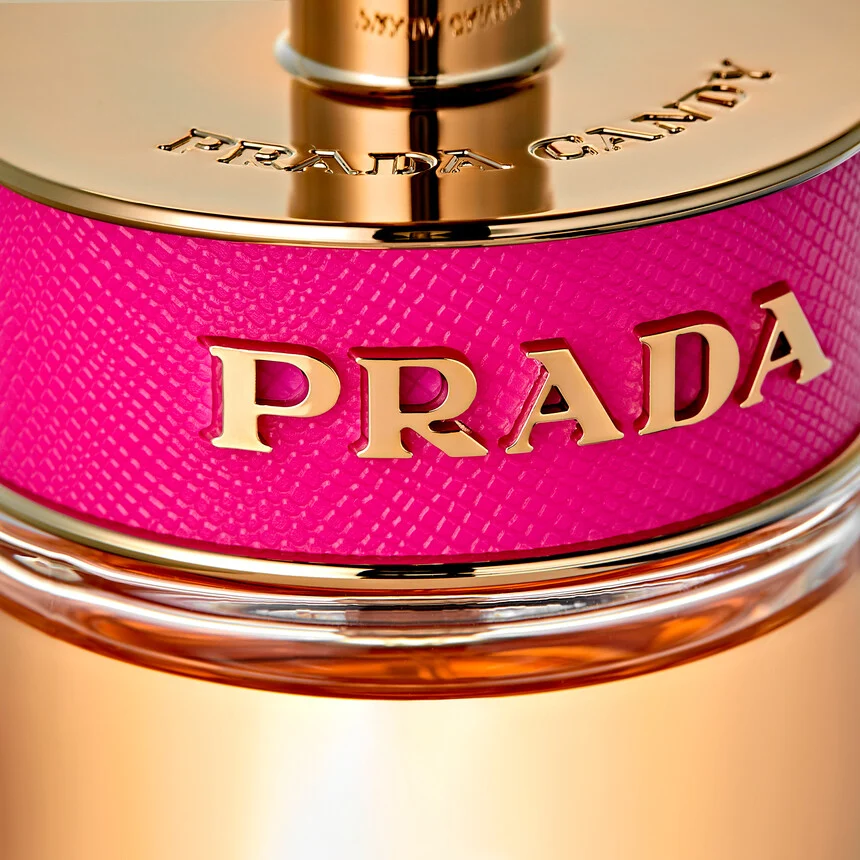
The fragrance is also a personal signature, even more than clothes. A perfume that plays well with every nose lacks distinctiveness, and consequently, distinction. If it won’t make an impression on others, chances are a fragrance won’t make an impression on you either. “The burnt rubber of Shalimar is intriguing,” explains Tiwari, “It’s an experimentation, producing a blend which a layman wouldn’t think possible. That window when the person is shocked and charmed is when that scent is sold.”
Luxury and Its Imitators
Paradoxically, when a fragrance becomes the subject of dupes, the original cements its status as a luxury item. But the scent itself becomes generic as more and more people have access to it. Cheaper dupes have come a long way, as copycat brands can bypass the expenses of research and development, and of luxury marketing, while producing similar synthetic-based fragrances. For fragrances that don’t rely on expensive natural ingredients, dupes can be a cost-effective substitute.
The main difference you’ll notice is that dupes usually lack the complexity of the original, though they might smell the same at first sniff. Base notes, such as ambergris, oudh, and orris root, tend to be the most expensive in perfumes — and they also provide body and staying power. The way a cheaper dupe evolves on your skin won’t be the same without these notes.
Niche vs. Mainstream Luxury
L’Oréal. Estée Lauder. Coty. LVMH. These are some of the world’s largest beauty conglomerates, and they specialize in snapping up luxury fragrances. “These big conglomerates prioritize scaling production and ensuring that fragrances have mass appeal, sometimes resulting in the watering down of the original signature scents,” says Mulla. “This is why many of these brands are now often referred to as premium or prestige brands rather than true luxury.”
As Tiwari says, “If the intention is to draw maximum profit and compromise on the quality and projection of the scent, no matter how expensive it is, it won’t be luxurious.” That’s why niche artisanal brands like Kastoor represent the changing face of luxury fragrances.
“The mainstream is playing catch up,” Gupta opines. “Today’s audience is discerning and less driven by brands, they’re more about storytelling.”
The Future of Luxury: Layering and Customization
Plenty of brands keep prices relatively low and still produce quality perfumes that smell expensive. Zara is a great example, as is the homegrown fragrance house Ajmal. “These niche fragrances are often more experimental. Unconventional ingredients or bold blends set them apart, as consumers increasingly seek something personal and unique,” says Mulla.
This desire for fresh and interesting combinations is why Gupta sees layering fragrances as the next big luxury trend. “It’s a status symbol based on your taste and discernment, and you can’t layer flagship designer fragrances.” In a sense, it’s like making a custom perfume without the eyewatering expense of getting one made for you at a major fragrance house. Layering allows you more flexibility too, to customise your scent according to the mood and moment.
What the experts agree is that luxury is a state of mind. “Of course, the purity of ingredients matters,” says Tiwari. “How the ingredients react in a blend, what kind of harmony they create. But I believe how scents and luxury play hand-in-hand is more metaphysical than physical. Fragrance shapes our perception of reality. That’s what makes it luxurious.”
Also Read:
DIY Skincare Secrets: 5 Effective Recipes for Glowing Skin
Unlocking Divine Feminine Energy: How Beauty and Style Can Transform Your Inner Power
Decoding Neuroglow: Here’s How to Boost Your Skin’s Radiance by Nurturing Your Mind, a Dermat’s POV

